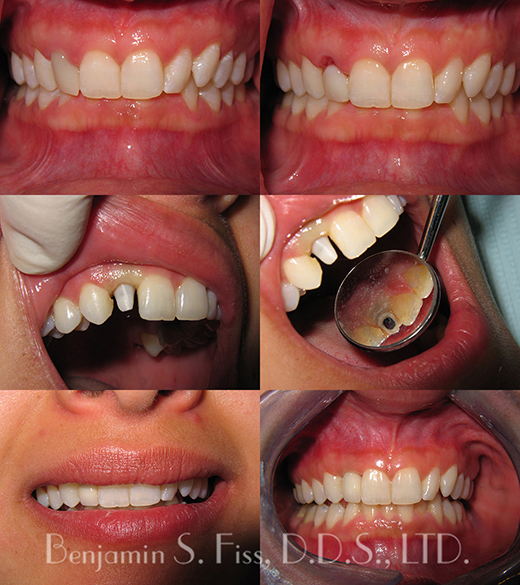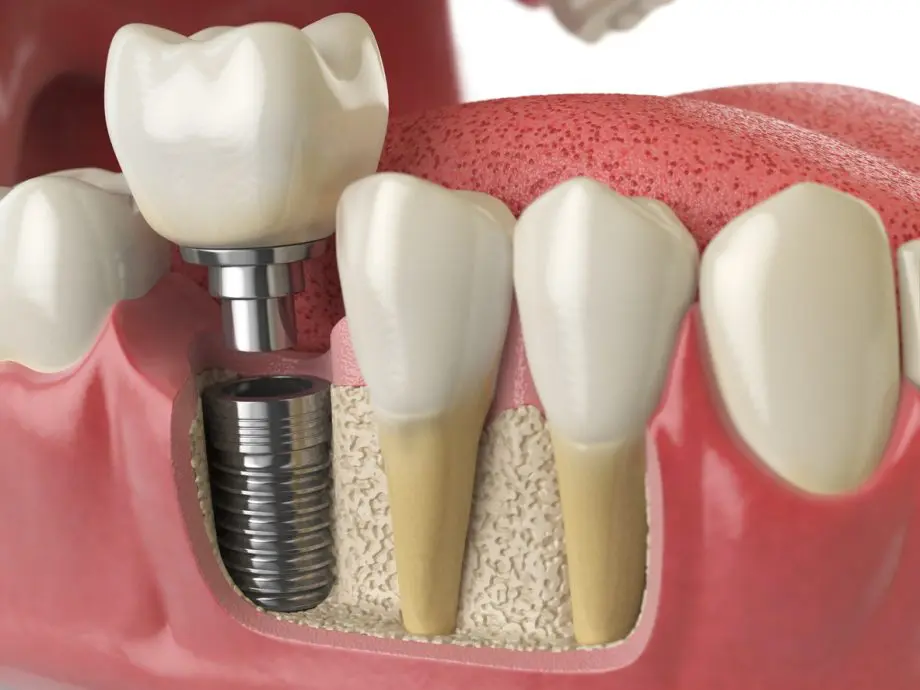Johnstown Dental Granville OH Dental Implant Surgery
Johnstown Dental Granville OH Dental Implant Surgery
Blog Article
Dental Center Granville OH Dental Implant Surgery: Procedure, Recovery, and What to Expect
Dental implants have revolutionized restorative dentistry, offering a reliable alternative to traditional methods for changing missing teeth. The integration of dental implants with the jawbone is a complex biological course of often why not try these out known as osseointegration. YOURURL.com This process not solely anchors the implant securely but also helps maintain jawbone health, preventing the bone loss usually have a peek here associated with missing teeth.
The dental implant itself is usually made of titanium, a biocompatible material that the body accepts. When an implant is placed within the jaw, it's designed to carefully mimic the root of a natural tooth, which is essential for effective integration. The titanium floor encourages the expansion of bone cells, enabling the jawbone to bond with the implant over time.
Dental Clinic Condit OH Understanding Dental Implants: A Comprehensive Guide

Several stages constitute the osseointegration course of. Initially, when the implant is surgically placed into the jaw, a therapeutic interval is required for the encircling bone to start out transforming. During this time, the bone grows around the implant, creating a strong and steady basis. This healing time can vary, sometimes lasting several weeks to a few months, depending on various factors, including the individual's overall health and the specific location of the implant.
The position of surrounding bone quality is crucial. High-density bone typically supplies a greater surroundings for osseointegration in comparison with lower-density bone. Specialists usually consider the quality and amount of bone earlier than the implant placement to find out the best plan of action, which can involve bone grafting procedures in circumstances of inadequate bone volume. Grafting enhances the possibilities of profitable integration by creating a extra robust base for the implant.
The organic mechanisms behind osseointegration involve various mobile activities. Osteoblasts, the cells answerable for bone formation, migrate to the implanted area and start to lay down new bone materials. Simultaneously, the floor of the titanium implant undergoes changes that facilitate this bonding course of. Some newer implant designs incorporate surface modifications to additional enhance organic integration.
Smile Care Sunbury OH Dental Implant Procedure: What You Need to Know Before Surgery
Throughout the combination process, the role of blood supply cannot be overstated. An enough blood provide nourishes the bone and ensures the correct functioning of the cells concerned within the therapeutic and integration process. Improved blood flow leads to quicker healing and better outcomes, which is why surgical techniques and aftercare typically prioritize maintaining or enhancing blood circulation to the location of the implant.
Improvements in surgical methods additionally contribute considerably to the success rates of dental implants - Johnstown Dental Centerburg OH. Minimally invasive strategies and guided implant surgery permit for more precise placement of implants, reducing trauma to the surrounding tissues and potentially dashing up the therapeutic time. The much less trauma experienced by the jawbone can lead to a more favorable setting for osseointegration
Dental Care Associate Pataskala OH Dental Implant Procedures

How a person maintains their oral hygiene after receiving an implant can significantly affect integration success. Proper care across the implant site helps prevent infections, which may disrupt the healing process. Regular dental check-ups are also vital to observe the health of each the implant and the encompassing gum and bone tissues.
Long-term success with dental implants is often linked to components corresponding to lifestyle selections. Patients who smoke or have uncontrolled diabetes might experience decrease rates of osseointegration. These conditions intervene with healing and blood provide, making it crucial for individuals contemplating implants to discuss their health historical past with their dentist.
After the successful integration of the implant, the following phase entails putting the prosthetic restoration, corresponding to a crown. The last restoration should fit comfortably and functionally combine with the prevailing dentition. Johnstown Dental Alexandria OH. Proper alignment and occlusion play important roles in how well the implant will perform over time
Orthodontics Hartford OH Common Dental Implant Problems and How to Avoid Them
Dental implants present an enduring answer that helps protect the integrity of the jawbone. When a tooth is misplaced, the bone that after anchored its root begins to deteriorate. Implants stimulate the bone equally to natural teeth, triggering the jaw to keep up its density and power. This stimulation is crucial for stopping the sunken facial appearance that always accompanies tooth loss.
In conclusion, the combination of dental implants with the jawbone entails a fancy interplay of biological and mechanical factors. Understanding the osseointegration process can empower individuals to make informed selections about their dental health. By appreciating the significance of selecting a talented dental professional and adhering to post-operative care, patients can achieve optimal outcomes and luxuriate in restored perform and aesthetics for many years to return.

- Dental implants mimic the structure of natural teeth and supply a secure basis by integrating with the jawbone via a course of referred to as osseointegration.
- The biocompatibility of titanium, generally used for dental implants, performs an important position in promoting successful bonding with bone tissue.
- Osseointegration typically begins within a number of weeks post-surgery, with the implant surface gradually changing into enveloped by bone cells.
- The mechanical stability of implants is enhanced by their floor roughness, which inspires bone development and improves the mixing course of.
- Immediate loading of implants could be feasible in certain circumstances, relying on bone density and the patient’s general dental health.
- Over time, the jawbone responds to the presence of an implant by present process transforming, contributing to the long-term success of the procedure.
- Factors such as oral hygiene, smoking habits, and systemic medical conditions can considerably influence the mixing process of dental implants.
- Regular follow-ups and imaging techniques, such as X-rays, may help monitor the success of osseointegration and detect potential issues early.
- The preservation of surrounding bone structure is enhanced by the stimulation offered by dental implants, which can help prevent bone loss in adjacent areas.
- Successful integration not solely restores performance to the tooth but in addition contributes significantly to the aesthetics of the affected person's smile and facial structure.undefinedWhat are dental implants and the way do they work with the jawbone?undefinedDental implants are titanium posts surgically inserted into the jawbone to serve as synthetic tooth roots. Once positioned, they undergo a course of referred to as osseointegration, where the jawbone naturally fuses with the implant, making a secure foundation for the replacement tooth.
How does osseointegration occur?undefinedOsseointegration is a organic process where bone cells develop and fasten to the floor of the dental implant. This sometimes takes several months, throughout which the implant turns into firmly anchored in the jawbone, guaranteeing strength and stability for the bogus tooth.
Dental Clinic New Albany OH Dental Implants: Services and Expertise
What elements affect the success of dental implant integration?undefinedKey components include the quality and quantity of the jawbone, the affected person's total health, and oral hygiene practices. Adequate bone density is essential, as inadequate bone may impede successful integration.
Is the pain during dental implant placement significant?undefinedMost patients report minimal discomfort through the process, as native anesthesia is used. Post-operative pain is mostly manageable with over-the-counter pain reduction medications, and most discomfort subsides within a number of days.
How long does the integration process take?undefinedTypically, osseointegration takes about three to six months. However, this will differ based mostly on particular person therapeutic processes and the precise conditions of the jawbone.
Can anybody get dental implants?undefinedMost people are candidates for dental implants; nevertheless, sure conditions similar to uncontrolled diabetes or extreme gum disease might have an result on eligibility. A thorough analysis by a dental professional is important to determine suitability.
Mono Implants New Albany OH Dental Implants for Seniors: Considerations and Benefits
What can be carried out if there isn't sufficient jawbone for integration?undefinedIf there is inadequate bone, procedures like bone grafting can be carried out to reinforce the jawbone. Once the graft heals, dental implants can then be positioned, allowing for profitable integration.
Are there long-term care considerations after getting dental implants?undefinedYes, sustaining excellent oral hygiene is important for the longevity of dental implants. Regular dental check-ups and cleanings also assist prevent complications and make sure the ongoing health of the encompassing bone and gum tissue.
Orthodontics New Albany OH Dental Implants: Options, Costs, and Care
How do dental implants evaluate to different tooth replacement options?undefinedDental implants are sometimes thought of superior to dentures and bridges as a result of their durability, stability, and the preservation of jawbone health. Unlike other choices, implants fuse with the jawbone, which helps preserve bone density and facial structure.
Report this page